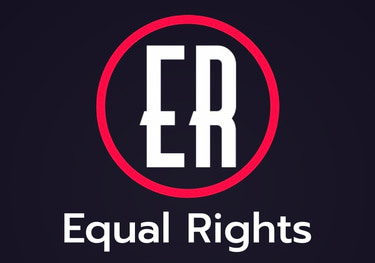Climate Justice:
Understanding the Intersection of Environmental & Social Inequities
Kylo B
5/16/2024
Climate Justice: Understanding the Intersection of Environmental & Social Inequities
Climate change is one of the most pressing global challenges of our time, affecting ecosystems, economies, and communities worldwide.
However, its impacts are not evenly distributed; marginalized communities often bear the brunt of environmental degradation and climate-related disasters.
This phenomenon, known as climate injustice, underscores the urgent need to integrate social justice into environmental policies to create equitable and sustainable solutions.
Disproportionate Impacts on Marginalized Communities
Economic Inequality & Climate Vulnerability
Economic inequality significantly influences a community's vulnerability to climate change.
Low-income communities often lack the resources necessary to prepare for, respond to, and recover from climate-related events such as hurricanes, floods, and heatwaves.
These populations typically reside in areas with poor infrastructure, inadequate housing, and limited access to healthcare, making them more susceptible to the adverse effects of climate change.
For instance, during Hurricane Katrina in 2005, low-income and predominantly Black neighborhoods in New Orleans suffered disproportionately due to inadequate levee systems, insufficient emergency response, and historical disinvestment.
The aftermath of the hurricane highlighted the stark disparities in resilience and recovery between affluent and marginalized communities.
Health Disparities & Environmental Racism
Environmental racism refers to the placement of low-income or minority communities in proximity to environmentally hazardous or degraded environments, such as toxic waste sites, landfills, and industrial facilities.
These communities experience higher exposure to pollutants, leading to increased rates of respiratory illnesses, cardiovascular diseases, and other health problems.
Climate change exacerbates these health disparities.
Rising temperatures, for instance, can worsen air quality by increasing ground-level ozone and particulate matter, disproportionately affecting communities of color who already face higher pollution levels.
Additionally, extreme weather events can disrupt access to healthcare services, further exacerbating existing health inequities.
Indigenous Communities & Cultural Erosion
Indigenous communities are particularly vulnerable to the impacts of climate change due to their deep connection to the land and natural resources.
Climate change threatens their traditional ways of life, food security, and cultural heritage.
For example, in Alaska, Indigenous peoples face the loss of sea ice, which is critical for hunting and transportation.
Similarly, rising sea levels threaten coastal Indigenous communities, forcing relocations that erode cultural ties and social structures.
The Importance of Integrating Social Justice into Environmental Policies
Equitable Policy Development
To address climate injustice, it is crucial to develop and implement policies that prioritize the needs and voices of marginalized communities.
This includes ensuring that these communities are actively involved in decision-making processes related to environmental policies and climate action plans.
Equitable policy development can help ensure that the benefits of climate action, such as clean energy and green jobs, are distributed fairly and that vulnerable populations are protected.
Climate Adaptation & Resilience
Building climate resilience in marginalized communities requires targeted investments in infrastructure, healthcare, and social services.
Policies should focus on enhancing the capacity of these communities to withstand and recover from climate-related shocks. This includes upgrading housing, improving access to healthcare, and investing in community-based resilience projects.
For example, urban greening initiatives can help reduce heat island effects in low-income neighborhoods, while also providing recreational spaces and improving mental health.
Similarly, community-driven disaster preparedness programs can empower residents to develop and implement their own emergency plans, increasing local resilience.
Legal and Institutional Reforms
Addressing climate justice also involves legal and institutional reforms to rectify historical injustices and prevent future harm.
Strengthening environmental regulations, enforcing anti-discrimination laws, and ensuring corporate accountability are critical steps in protecting marginalized communities from environmental harms.
One notable example is the Environmental Justice for All Act, proposed in the United States, which aims to address the disproportionate environmental health impacts on communities of color, low-income communities, and Indigenous populations.
Such legislation seeks to provide greater protections, enhance community engagement, and ensure fair distribution of environmental benefits.
International Cooperation and Funding
Climate justice is a global issue that requires international cooperation and funding. Developed nations, which have historically contributed the most to greenhouse gas emissions, have a responsibility to support developing countries in their climate adaptation and mitigation efforts.
This includes providing financial resources, technology transfer, and capacity-building initiatives to help vulnerable countries cope with the impacts of climate change.
The Green Climate Fund, established under the United Nations Framework Convention on Climate Change (UNFCCC), is one mechanism aimed at supporting developing countries in their climate efforts.
However, ensuring that these funds reach the most marginalized communities and are used effectively remains a challenge that requires ongoing oversight and commitment.
Integrating social justice into environmental policies is essential for addressing the disproportionate impacts of climate change on marginalized communities.
By developing equitable policies, enhancing community resilience, enacting legal reforms, and fostering international cooperation, we can work towards a future where environmental and social justice are intertwined, ensuring that all communities can thrive in the face of climate change.
Addressing climate justice is not just an environmental imperative but a moral one, requiring collective action and a commitment to equity and inclusion. As we confront the challenges of climate change, let us do so with a steadfast dedication to justice, ensuring that no community is left behind.
